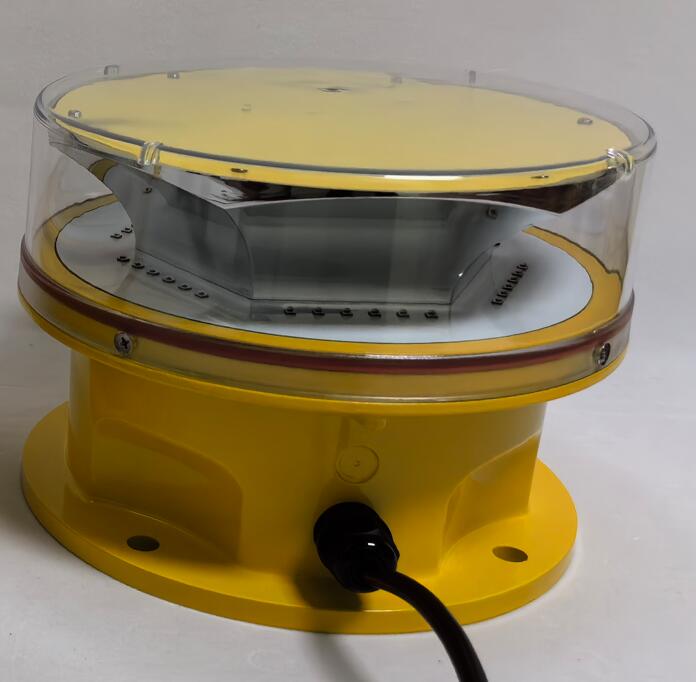Posted: 2025-08-07
As urban landscapes continue to evolve with increasingly taller structures, the importance of proper obstruction light building practices has never been greater. These specialized lighting systems serve as vital visual markers for aircraft, preventing collisions with high-rise buildings, telecommunication towers, and other tall structures. This article explores the essential considerations, regulations, and best practices for implementing effective obstruction lighting systems on buildings.
Why Obstruction Light Building Matters
The rapid growth of urban infrastructure presents unique challenges for aviation safety. Without proper obstruction light building protocols, tall structures become invisible hazards to aircraft, particularly during:
Nighttime operations
Low visibility conditions
Emergency flight situations

High-traffic airspace operations
The consequences of inadequate obstruction lighting can be catastrophic, making proper installation and maintenance a non-negotiable safety requirement.
Regulatory Framework for Obstruction Light Building
International Standards
ICAO Annex 14 requirements for obstacle lighting
| obstruction light building |
IEC 61823 certification for aviation obstruction lights
Regional variations in lighting specifications
FAA Requirements (U.S. Focus)
AC 70/7460-1L guidelines for obstruction marking
Specific requirements based on structure height:
200-500 feet: Medium intensity lights
Above 500 feet: High intensity lighting systems
Dual lighting requirements for certain structures
Key Components of Effective Obstruction Light Building
1. Lighting System Design
Proper light spacing and placement calculations
Dual lighting systems for day/night operations
Backup power system integration
Photocell and control system configuration
2. Structural Considerations
Wind load calculations for mounting hardware
Vibration resistance for tall buildings
Corrosion protection for coastal installations
Maintenance access planning
3. Environmental Factors
Weather resistance specifications
Lightning protection systems
Bird deterrence features
Light pollution mitigation
Best Practices for Obstruction Light Building Implementation
Planning Phase
Conduct thorough obstacle assessment
Engage aviation authorities early
Coordinate with architects and engineers
Consider future building expansions
Installation Phase
Use certified installation teams
Implement quality control checks
Document all installation details
Conduct initial performance testing
Maintenance Phase
Establish regular inspection schedules
Implement remote monitoring where possible
Maintain detailed service records
Train building maintenance staff
Emerging Technologies in Obstruction Light Building
The field of obstruction light building is evolving with several promising innovations:
Smart Lighting Systems
Automated brightness adjustment
Weather-adaptive operation
Aircraft-activated lighting
Predictive maintenance capabilities
Sustainable Solutions
Solar-powered obstruction lights
Energy-efficient LED technology
Recyclable materials
Reduced light pollution designs
Advanced Monitoring
IoT-enabled performance tracking
AI-powered fault detection
Cloud-based maintenance scheduling
Real-time alert systems
Common Challenges in Obstruction Light Building
Implementing effective obstruction lighting systems presents several challenges:
Technical Challenges
Balancing visibility requirements with light pollution concerns
Ensuring reliability in extreme weather conditions
Maintaining consistent performance over time
Integrating with building management systems
Regulatory Challenges
Navigating varying international standards
Keeping pace with regulation updates
Managing compliance documentation
Addressing local community concerns
Operational Challenges
Coordinating with air traffic control
Scheduling maintenance without disrupting operations
Training personnel on specialized systems
Managing spare parts inventory
Case Studies: Successful Obstruction Light Building Projects
Urban Skyscraper Implementation
100+ story building in major metropolitan area
Dual lighting system with automatic switching
Integrated with building's emergency power system
Remote monitoring capabilities
Remote Telecommunication Tower
Solar-powered obstruction lighting
Extreme weather-resistant design
Minimal maintenance requirements
Compliant with multiple regulatory standards
Offshore Wind Farm Application
Marine-grade obstruction lighting
Integrated with turbine operations
Specialized anti-corrosion measures
Helicopter-accessible maintenance
Future Trends in Obstruction Light Building
The future of obstruction light building will likely see:
Increased Automation
Self-diagnosing systems
Automated reporting to authorities
Dynamic lighting adjustments
Enhanced Sustainability
Improved energy efficiency
Eco-friendly materials
Reduced environmental impact
Greater Integration
Tighter building management system integration
Air traffic control system coordination
Urban air mobility compatibility
Proper obstruction light building practices form a critical component of modern aviation safety infrastructure. As buildings continue to reach new heights and urban airspace becomes more crowded, the importance of effective, reliable obstruction lighting systems will only increase. By adhering to regulatory requirements, implementing best practices, and embracing new technologies, building owners and operators can ensure their structures remain safe and compliant while contributing to overall aviation safety.
The field continues to evolve with technological advancements that promise to make obstruction lighting systems more efficient, sustainable, and intelligent. Staying informed about these developments and maintaining rigorous installation and maintenance standards will be key to successful obstruction light building in the years to come.